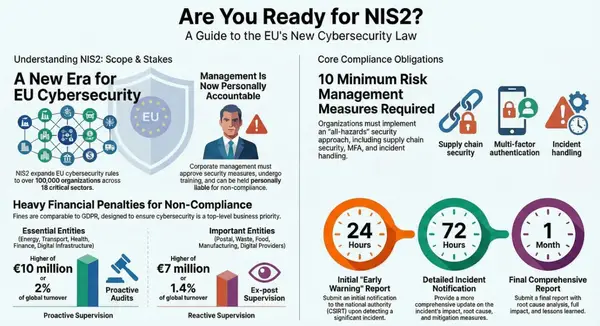HITRUST CSF: The Gold Standard for Healthcare Data Protection in 2025
Stay ahead of evolving compliance requirements with our comprehensive analysis of 2025 regulatory trends. This guide offers strategic insights and practical implementation steps for compliance professionals navigating today's complex regulatory landscape.

Introduction
In an era of accelerating digital transformation in healthcare, protecting sensitive patient data has never been more challenging or critical. Healthcare organizations face a complex web of regulatory requirements, sophisticated cyber threats, and increasing integration with third-party services—all while managing sensitive protected health information (PHI) that demands the highest levels of security and privacy protection.

The Health Information Trust Alliance Common Security Framework (HITRUST CSF) has emerged as the gold standard for healthcare data protection, offering a comprehensive, certifiable framework that addresses the unique security challenges faced by healthcare organizations and their business associates. As we navigate 2025's evolving threat landscape, HITRUST continues to provide a robust approach to managing information risk and compliance in healthcare and beyond.
This article explores the HITRUST CSF's structure, implementation methodology, certification process, and strategic importance for organizations handling healthcare data in today's complex regulatory environment.
Understanding HITRUST CSF
HITRUST CSF is a certifiable framework that provides organizations with a comprehensive, flexible, and efficient approach to regulatory compliance and risk management. Developed in collaboration with healthcare, technology, and information security leaders, the framework was designed to address the specific security, privacy, and compliance challenges of organizations that create, access, store, or exchange sensitive information, particularly in healthcare.

Key Characteristics
- Comprehensive Integration: HITRUST CSF harmonizes multiple standards and regulations, including HIPAA, NIST, ISO, PCI, GDPR, and state-specific requirements, into a single overarching framework.
- Scalability: The framework's control requirements scale based on organizational factors, allowing implementation to be tailored to organizations of varying sizes, complexities, and risk profiles.
- Prescriptive Guidance: Unlike some frameworks that offer general principles, HITRUST CSF provides specific, actionable control requirements that organizations can implement and assess.
- Certification Option: Organizations can undergo formal assessment and certification, providing independent verification of their security and privacy practices.
- Regular Updates: The framework is regularly updated to address emerging threats, regulatory changes, and technological advancements, with CSF version 11 released in 2024.
- Industry Recognition: HITRUST certification is widely recognized by healthcare organizations, insurers, and business partners as evidence of robust security and privacy practices.

Evolution of HITRUST CSF
Since its inception in 2007, HITRUST has continually evolved to meet the changing needs of healthcare organizations and their partners:
Initial Development (2007-2009)
HITRUST was established as a collaboration between healthcare, technology, and information security organizations to develop a common security framework for the healthcare industry.
CSF v1-v8 (2009-2018)
Early versions focused on mapping HIPAA Security Rule requirements to actionable controls, gradually expanding to incorporate additional standards and regulations.
CSF v9 (2019)
Introduced enhanced mappings to NIST Cybersecurity Framework and expanded coverage of privacy-related controls in response to emerging privacy regulations.
CSF v10 (2022)
Streamlined the assessment process while expanding coverage of cloud security, supply chain risk management, and advanced threat protection.
CSF v11 (2024)
The latest major release featuring enhanced controls for artificial intelligence, expanded privacy requirements aligned with global regulations, and updated guidance for secure software development.

Core Components of HITRUST CSF
HITRUST CSF is structured around several key components that together form a comprehensive security and privacy management framework:
1. Control Categories
The framework organizes controls into 14 categories that address different aspects of information security:
- Access Control
- Security Awareness and Training
- Audit Logging and Monitoring
- Business Continuity and Disaster Recovery
- Configuration Management
- Data Protection and Privacy
- Endpoint Protection
- Incident Management
- Mobile Device Security
- Network Protection
- Risk Management
- Security Policy
- Third-Party Assurance
- Threat Management

2. Control References
Each control category contains specific requirements mapped to various regulatory frameworks and standards, including:
- HIPAA Security Rule
- NIST Cybersecurity Framework
- ISO 27001/27002
- PCI DSS
- GDPR
- State privacy laws (CCPA, CPRA, CDPA, etc.)
- Industry best practices
3. Implementation Levels
HITRUST CSF implements a maturity model approach with three implementation levels that allow organizations to scale their security controls based on their risk profile:
- Level 1: Basic security requirements appropriate for smaller organizations or those with lower risk profiles.
- Level 2: Enhanced security requirements suitable for medium-sized organizations or those handling more sensitive data.
- Level 3: Comprehensive security requirements designed for large organizations or those with high-risk data processing activities.
4. Assessment Methodology
The framework includes a structured assessment methodology that enables organizations to:
- Conduct self-assessments
- Undergo validated assessments with third-party assessors
- Achieve certification through rigorous assessment and validation
HITRUST Certification Process
One of the distinguishing features of HITRUST CSF is its robust certification process, which provides independent verification of an organization's security and privacy practices:
1. Readiness Assessment
Organizations typically begin with a readiness assessment to:
- Determine the appropriate scope for certification
- Identify gaps in current security controls
- Develop remediation plans for identified gaps
- Prepare for the validated assessment
2. Validated Assessment
The formal assessment process includes:
- Engagement of a HITRUST Authorized External Assessor
- Documentation of control implementation
- Testing of control effectiveness
- Collection of evidence demonstrating control operation
- Scoring of controls based on maturity and implementation
3. HITRUST Quality Assurance
HITRUST's quality assurance process reviews the assessment to:
- Verify the accuracy and completeness of the assessment
- Ensure consistency in scoring and findings
- Request additional evidence where needed
- Determine final certification status
4. Certification Issuance
Based on the assessment results and quality assurance review, HITRUST may issue:
- HITRUST CSF Certification: Valid for two years, indicating the organization has met all certification requirements.
- HITRUST CSF Validated Assessment: Recognition that an assessment has been completed and validated, even if certification criteria were not fully met.
5. Continuous Monitoring
Between certification cycles, organizations must:
- Submit interim assessment reports
- Address significant changes to systems or processes
- Monitor and respond to new threats and vulnerabilities
- Prepare for recertification before the two-year expiration
Strategic Benefits of HITRUST CSF in 2025
Implementing HITRUST CSF and achieving certification offers several strategic advantages for healthcare organizations and their business associates in 2025:
1. Comprehensive Compliance Approach
As regulatory requirements continue to proliferate, HITRUST CSF provides a unified approach to addressing multiple compliance mandates. By 2025, organizations handling healthcare data must comply with:
- HIPAA Security and Privacy Rules
- State-level privacy laws in over 20 states
- International regulations for cross-border data transfers
- Industry-specific requirements from payors and partners
HITRUST's mapped controls help organizations address these diverse requirements through a single framework, reducing the complexity and cost of managing multiple compliance programs.
2. Third-Party Risk Management
Healthcare organizations increasingly rely on complex networks of vendors, cloud providers, and business associates, all of which pose potential security risks. HITRUST certification:
- Provides standardized assurance of vendor security practices
- Streamlines vendor assessment processes
- Reduces the need for custom security questionnaires
- Facilitates comparison between potential partners
By 2025, many healthcare organizations require HITRUST certification from their business associates, making certification a competitive necessity for vendors serving the healthcare sector.
3. Cyber Insurance Advantages
As cyber insurance markets continue to harden, insurers are becoming more selective about coverage and premiums. HITRUST certification:
- Demonstrates robust security practices to insurers
- May qualify organizations for premium discounts
- Can expand available coverage options
- Provides documentation that accelerates the underwriting process
Some insurers now explicitly recognize HITRUST certification in their underwriting processes, offering preferential terms to certified organizations.
4. Merger and Acquisition Due Diligence
In the active healthcare M&A market, HITRUST certification streamlines due diligence processes by:
- Providing standardized security assessment documentation
- Demonstrating regulatory compliance readiness
- Highlighting security maturity to potential acquirers or investors
- Potentially increasing organizational valuation
Organizations considering acquisitions often view HITRUST certification as a positive indicator of reduced compliance and security risk.
5. Patient Trust and Reputation Management
As healthcare consumers become increasingly aware of data privacy issues, HITRUST certification helps organizations:
- Demonstrate commitment to protecting patient information
- Build trust with privacy-conscious consumers
- Differentiate from competitors without certification
- Respond confidently to patient inquiries about data protection
By 2025, healthcare organizations are increasingly promoting their HITRUST certification status in patient communications as a trust-building measure.
HITRUST CSF and Emerging Healthcare Challenges
HITRUST CSF continues to evolve to address emerging challenges in healthcare data protection:
AI and Machine Learning in Healthcare
As AI applications in healthcare accelerate, HITRUST CSF v11 includes controls addressing:
- Algorithmic transparency and explainability
- Data minimization in AI training datasets
- Risk assessment for automated decision-making
- Privacy protections in AI-driven analytics
- Continuous monitoring of AI system outputs
Telehealth Security
With telehealth becoming a permanent feature of healthcare delivery, HITRUST addresses:
- Secure telehealth platform implementation
- Patient authentication in remote settings
- Privacy controls for virtual care
- Remote monitoring device security
- Cross-border telehealth compliance
Connected Medical Devices
As the Internet of Medical Things (IoMT) expands, HITRUST provides guidance on:
- Medical device inventory management
- Secure configuration of connected devices
- Network segmentation for medical devices
- Vulnerability management for devices with limited updating capability
- Incident response for device-related security events
Cloud Migration
As healthcare continues its shift to cloud infrastructure, HITRUST addresses:
- Shared responsibility models with cloud providers
- Data sovereignty and cross-border transfer requirements
- Cloud access security broker implementation
- Cloud backup and disaster recovery
- Secure decommissioning of cloud resources
Implementation Strategies for Success
Organizations seeking to implement HITRUST CSF and achieve certification should consider these proven strategies:
1. Executive Sponsorship
Secure C-level support for HITRUST implementation by:
- Highlighting regulatory compliance benefits
- Emphasizing business advantages like competitive differentiation
- Quantifying the cost of security incidents and regulatory penalties
- Demonstrating the value of simplified third-party assurance
2. Appropriate Scoping
Carefully define the certification scope to:
- Focus on systems handling sensitive data
- Align with business priorities and risk profile
- Create a manageable initial certification target
- Allow for scope expansion in future certifications
3. Gap Assessment and Remediation Planning
Conduct thorough gap assessment to:
- Identify control deficiencies early
- Develop prioritized remediation plans
- Allocate resources effectively
- Establish realistic certification timelines
4. Integration with Existing Programs
Leverage existing security and compliance initiatives by:
- Mapping current controls to HITRUST requirements
- Identifying overlap with other frameworks (ISO 27001, SOC 2, etc.)
- Using existing documentation where applicable
- Harmonizing policies and procedures across frameworks
5. Phased Implementation
Consider a phased approach:
- Begin with self-assessment to identify gaps
- Implement high-priority controls first
- Conduct validated assessment when ready
- Pursue certification as the final phase
6. Automation and Technology Enablement
Leverage technology to enhance efficiency:
- Implement governance, risk, and compliance (GRC) platforms
- Automate evidence collection where possible
- Deploy continuous monitoring tools
- Use security automation for routine controls
7. Regular Internal Assessments
Maintain continuous compliance through:
- Periodic control testing between certifications
- Internal audit programs focused on HITRUST controls
- Regular security committee reviews
- Integration with operational risk management
Case Studies: HITRUST Success Stories
Large Healthcare System
A multi-state healthcare system with 15 hospitals implemented HITRUST CSF to address diverse regulatory requirements across different jurisdictions. By replacing multiple compliance programs with a unified HITRUST approach, the organization reduced compliance costs by 30% while improving their overall security posture. The certification also streamlined their annual security assessments from insurance partners, reducing the time spent responding to custom questionnaires by over 60%.
Healthcare Technology Startup
A healthcare SaaS provider achieved HITRUST certification to compete effectively in the enterprise healthcare market. Despite limited resources, the startup implemented a focused certification scope covering their core patient data processing systems. The certification enabled them to win contracts with major health systems that required HITRUST certification from vendors, accelerating their market entry and driving a 45% increase in enterprise sales within one year.
Pharmacy Benefits Manager
A pharmacy benefits manager processing millions of prescription claims daily used HITRUST certification to address multiple compliance requirements, including HIPAA, PCI DSS, and state privacy laws. The structured implementation approach helped them identify and remediate previously unknown security gaps, particularly in their third-party management program. Following certification, the organization experienced a 70% reduction in security findings during customer audits and strengthened their position during contract renewals with major insurance clients.
Challenges and Considerations
While HITRUST offers significant benefits, organizations should be aware of potential challenges:
1. Resource Requirements
HITRUST implementation and certification require significant resources, including:
- Staff time for control implementation and documentation
- Budget for assessor fees and potential technology investments
- Ongoing resources for maintaining certification
- Training for staff involved in the compliance program
2. Assessment Complexity
The HITRUST assessment process is rigorous and detailed, requiring:
- Extensive documentation of control implementation
- Gathering and organizing substantial evidence
- Addressing detailed assessor questions
- Managing the quality assurance review process
3. Maintaining Continuous Compliance
Between certification cycles, organizations must:
- Address interim assessment requirements
- Update controls as the framework evolves
- Manage significant changes to in-scope systems
- Prepare for recertification before expiration
4. Balancing Security and Operations
Organizations sometimes struggle to:
- Implement security controls without disrupting clinical operations
- Balance security requirements with usability needs
- Address legacy systems with limited security capabilities
- Manage resistance to new security processes
The Future of HITRUST
As healthcare security and privacy challenges continue to evolve, HITRUST is likely to develop in several directions:
1. Enhanced Integration with Other Frameworks
Future HITRUST versions will likely feature:
- Tighter integration with NIST Cybersecurity Framework 2.0
- Expanded mappings to international standards like ISO 27701
- Alignment with emerging AI governance frameworks
- Enhanced coverage of industry-specific requirements
2. Advanced Assessment Methodologies
Assessment processes are evolving toward:
- Increased automation in evidence collection and validation
- Continuous assessment models replacing point-in-time certification
- Risk-based scoping to focus on critical systems
- Enhanced tools for managing the assessment process
3. Specialized Assessment Options
HITRUST continues to develop specialized offerings:
- Industry-specific assessment paths for pharmacy, insurance, etc.
- Size-appropriate assessment options for smaller organizations
- Focused assessments for specific risk areas (cloud, AI, etc.)
- International variations addressing regional requirements
4. Expanded Industry Adoption
HITRUST is expanding beyond its healthcare origins:
- Financial services organizations handling health data
- Life sciences and pharmaceutical companies
- Health and wellness technology providers
- Employee benefits and health management programs
Conclusion
In the complex healthcare data protection landscape of 2025, HITRUST CSF stands as a comprehensive framework that addresses the unique security and privacy challenges faced by healthcare organizations and their business associates. By integrating multiple regulatory requirements, providing prescriptive guidance, and offering a robust certification process, HITRUST enables organizations to demonstrate their commitment to protecting sensitive health information.
While implementing HITRUST CSF requires significant investment, the strategic benefits—including simplified compliance, enhanced third-party management, competitive advantage, and improved security posture—make it a valuable approach for organizations serious about healthcare data protection. As regulatory requirements continue to evolve and cyber threats become more sophisticated, HITRUST provides a structured, adaptable framework for managing information risk in healthcare and beyond.
Organizations considering HITRUST implementation should approach it as a strategic initiative rather than a compliance exercise, focusing on the tangible security improvements and business benefits that come with a mature security and privacy program aligned with industry best practices.










